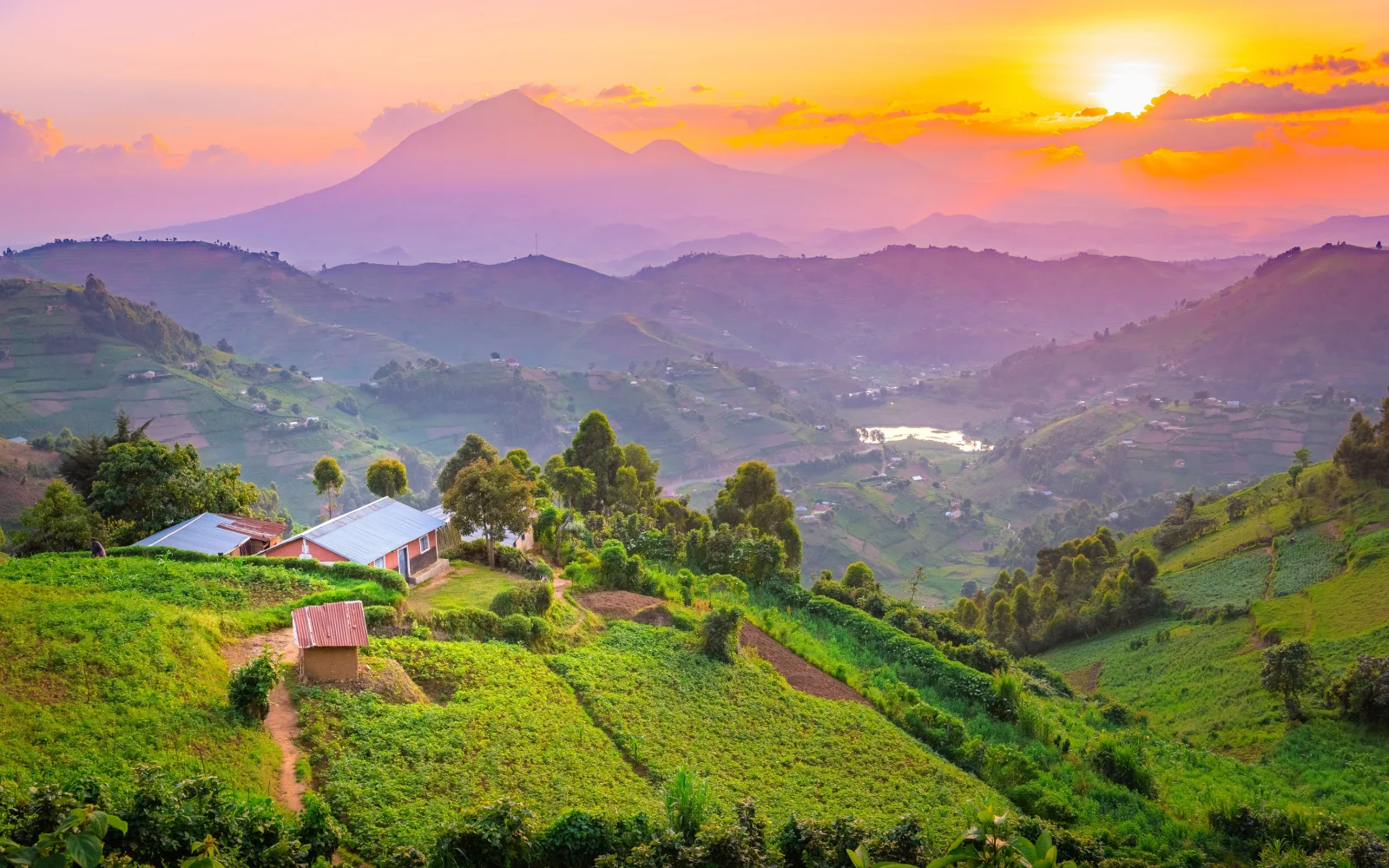What's the best time to visit Uganda?
The best time to visit Uganda is during its dry seasons from December to February and June to August, ideal for wildlife and birdwatching. January and February offer great conditions for gorilla trekking, while June to August marks the high season for safaris with easier wildlife spotting. During these months, the weather is favorable, making hiking and exploring the national parks more accessible and enjoyable.
Uganda, often described as the pearl of Africa, is a melting pot of landscapes and cultures that beckon travelers from around the world. Its rich tapestry weaves together a history marked by kings and kingdoms, and a present buzzing with vibrant city life, especially in its bustling capital, Kampala.
Nature takes center stage here, with lush greenery, diverse wildlife, and the iconic Nile River. The highlight for many is the chance to trek through misty mountains to encounter majestic gorillas in their natural habitat.
To truly soak in the essence of Uganda, from its artisanal crafts to its fusion of traditional and modern cuisines, timing your visit is key. Dive into our guide to discover the best time to visit Uganda, ensuring your journey is as enriching and memorable as the country itself.
Overall Best Time to Visit Uganda
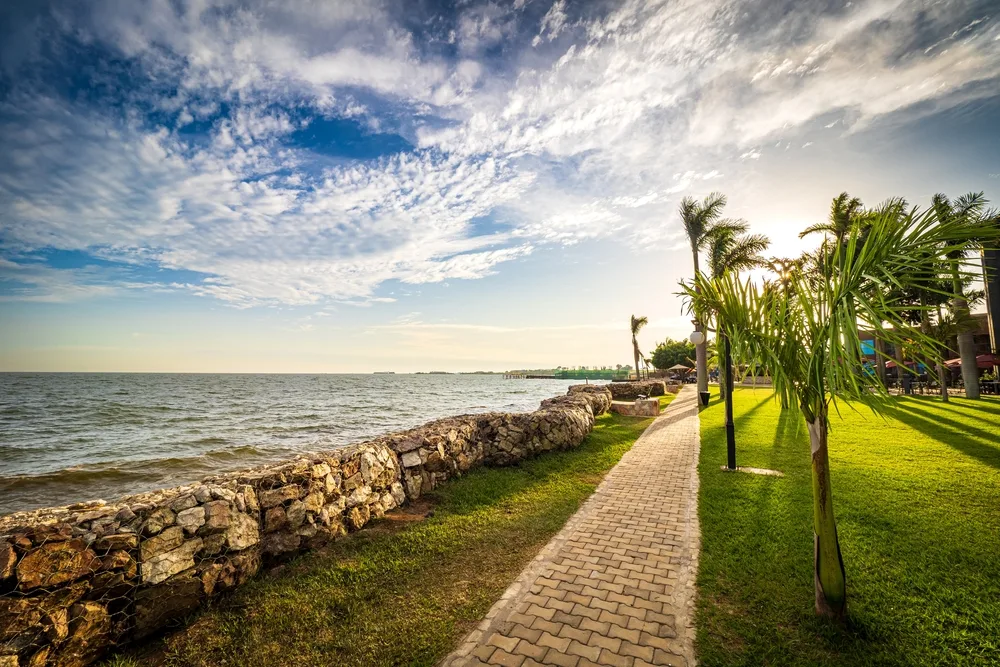
Schusterbauer.com/Shutterstock
The best time to visit Uganda is between its dry seasons, which include December to February and June to August. December marks the end of the rainy season.
It’s also the perfect time to go birdwatching since many migratory birds make their way into the region in December. Warm temperatures in January render it the perfect time to encounter endangered mountain gorillas.
Occasional rains might occur, but the skies are usually clear. You can see families moving through the verdant woodlands, providing a breathtakingly resonant encounter with Uganda’s flora and fauna.
The southern national parks are at their driest in February, so it’s the best month to undertake gorilla trekking since you won’t have to worry about slippery terrain.
During this time of year, the weather in north Uganda can get quite warm and dusty. June marks the beginning of the high season for Uganda’s luxurious safaris. Consider making your permit reservations beforehand.
Animals congregate near watering holes in July, making them easier to spot. The mud has dried up, so the trekking trails are much more manageable.
The hiking pathways are mud-free and much simpler to maneuver. August provides a perfect game-viewing experience. Besides lions and elephants, you’ll also encounter the elusive leopard.
Cheapest Time to Visit Uganda
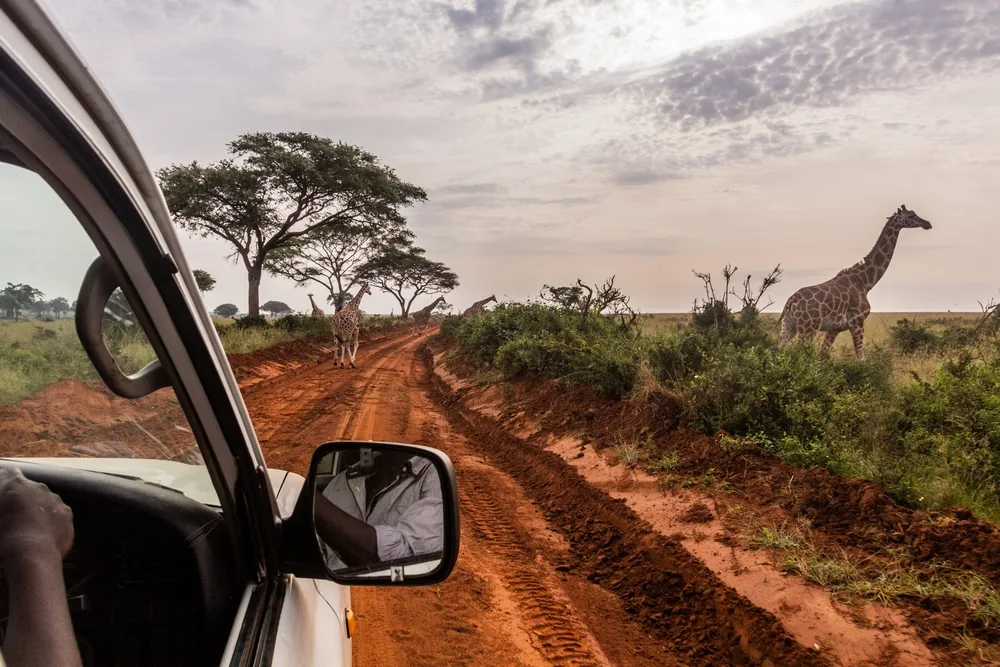
Matyas Rehak/Shutterstock
The cheapest time to visit Uganda is between September and November. Although September marks the dry season’s end, the rains’ arrival timing can affect whether you encounter any showers.
It’s not the best time of the year to go gorilla trekking, but if you’re willing to take chances, you’ll land cheaper accommodations and travel deals.
October isn’t a hectic month to visit Uganda. Prices are fair, and now is a wonderful time of year to take advantage of discounts on gorilla trekking permits. While most game parks are still operational, the downpour can be somewhat unpredictable.
November is typically wet. Even though the drought-stricken grasslands in the countryside have a bright green color, there aren’t as many tourists this month since the weather isn’t that great.
As a result, game parks, accommodations, and travel agencies are likely to give reasonable rates to lure more customers. You can book in advance or use alternative routes to get cheaper flight tickets when traveling to Uganda.
Least Busy Time to Visit Uganda
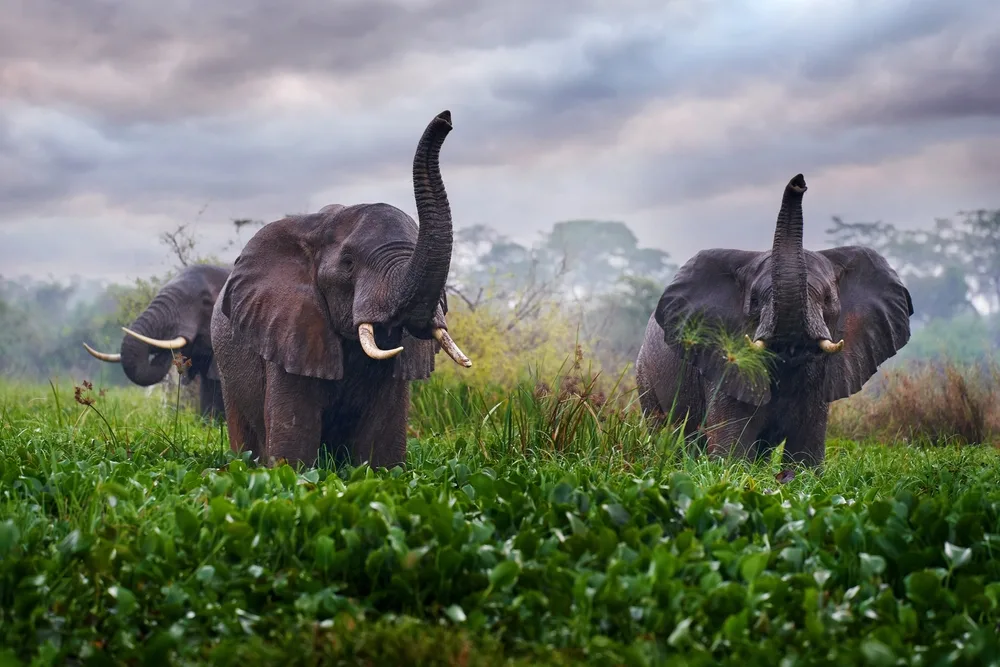
Ondrej Prosicky/Shutterstock
The least busy time to visit Uganda is between March and May. Uganda’s rainy season starts in March, and it’s the best time to witness the animals in game parks giving birth.
Birdwatchers are also in for a treat as they see various colorful, flying creatures. The most rain falls in April. Some roads are closed during this period due to steady rain, and parks become quiet.
While it’s possible to go on a gorilla trip at this time, you should prepare for a wet and muddy hike. However, the gorillas are said to prefer the lower, warmer slopes in the rainy season, shortening your hike.
Uganda’s non-migratory wildlife means there’s still much to see in game parks like Queen Elizabeth. Nevertheless, the thicker foliage can make it more challenging to view the animals. Remember that the already bad roads may worsen, and vehicles get stuck.
Furthermore, you can’t cancel your gorilla permit if it rains heavily because departures proceed as planned. May is usually wet but doesn’t have as much precipitation as April.
Even though the weather can be quite unpredictable, it’s still an excellent time to travel across the country exploring beautiful landscapes. To pay less for your flight, consider budget airlines such as Ethiopia Airlines or Kenya Airways.
Worst Time to Visit Uganda
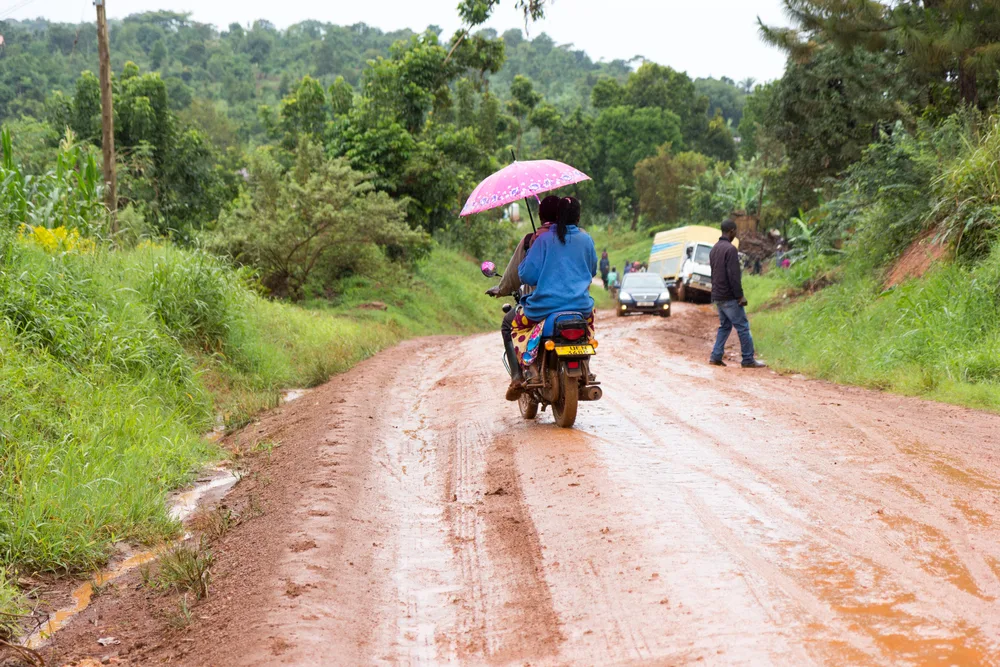
Buikwe, Uganda. 29 April 2017. A muddy dirt track road after heavy rains. Ugandan taxi motorbikes called “boda boda” can be seen/Adam Jan Figel/Shutterstock
The worst time to visit Uganda is around September when the country experiences heavy rainfall. However, Uganda’s weather is pleasant most of the year, and most attractions remain open even during the wetter months.
Deciding when to visit Uganda depends on the type of wildlife you hope to see. The climate in Uganda’s equatorial region is warm and tropical, with minimal seasonal differences.
The average temperature in Uganda is about 71 degrees Fahrenheit, with nighttime lows averaging around 55 degrees Fahrenheit. Being on the equator means it doesn’t constantly rain in Uganda, even during the wet months.
The average annual rainfall here is between 40 and 80 inches.
However, in between showers, the skies become clear and sunny. Restaurants’ rates in Uganda’s capital, Kampala, remain constant all year round, but you may get deals during the wet season at the parks’ lodges and camps.
Frequently Asked Questions
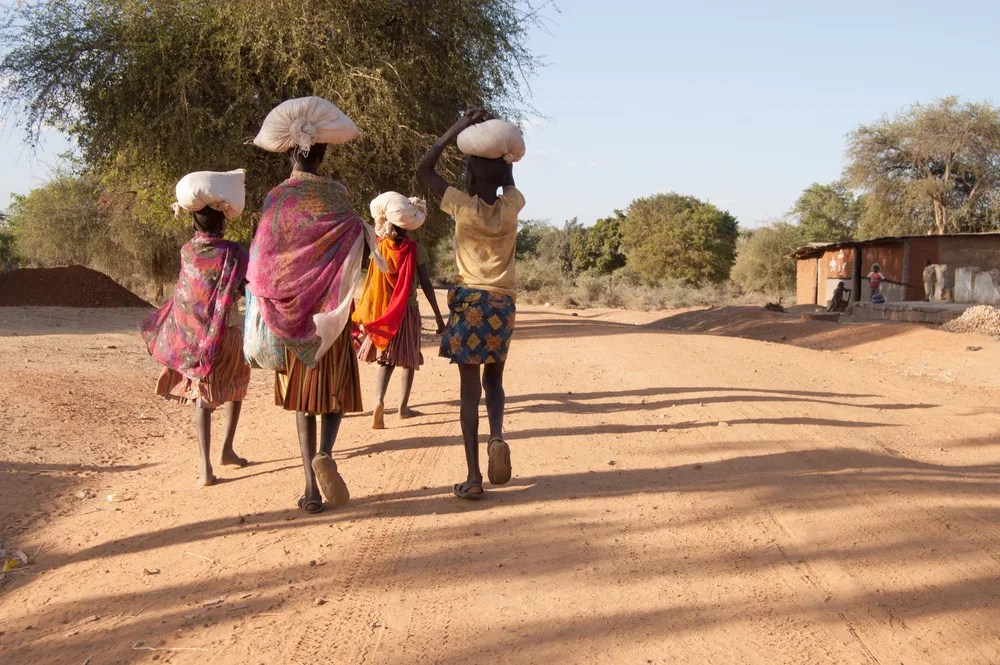
Arjen de Ruiter/Shutterstock
Here are the most popular questions people ask when visiting Uganda:
What is the best time to visit Uganda?
The best time to visit Uganda is from December to February. During these months, the temperature is cool, humidity is low, and there’s little rain. That renders it easier to explore the country, go on safari or climb mountains.
What are the hottest months in Uganda?
Uganda has a tropical climate, meaning it’s hot and humid all year round. The hottest months are January and February, when temperatures range from 70 to 83 degrees Fahrenheit, with peaks of over 86 degrees in the country’s northern parts.
So, What’s the Best Time to Visit Uganda?
The best time to visit Uganda is between December and February. Before making your travel plans, ensure to do some research and check the most current travel advisories. You can have a safe and enjoyable trip to Uganda with just a little effort. So what are you waiting for — book your trip today!



